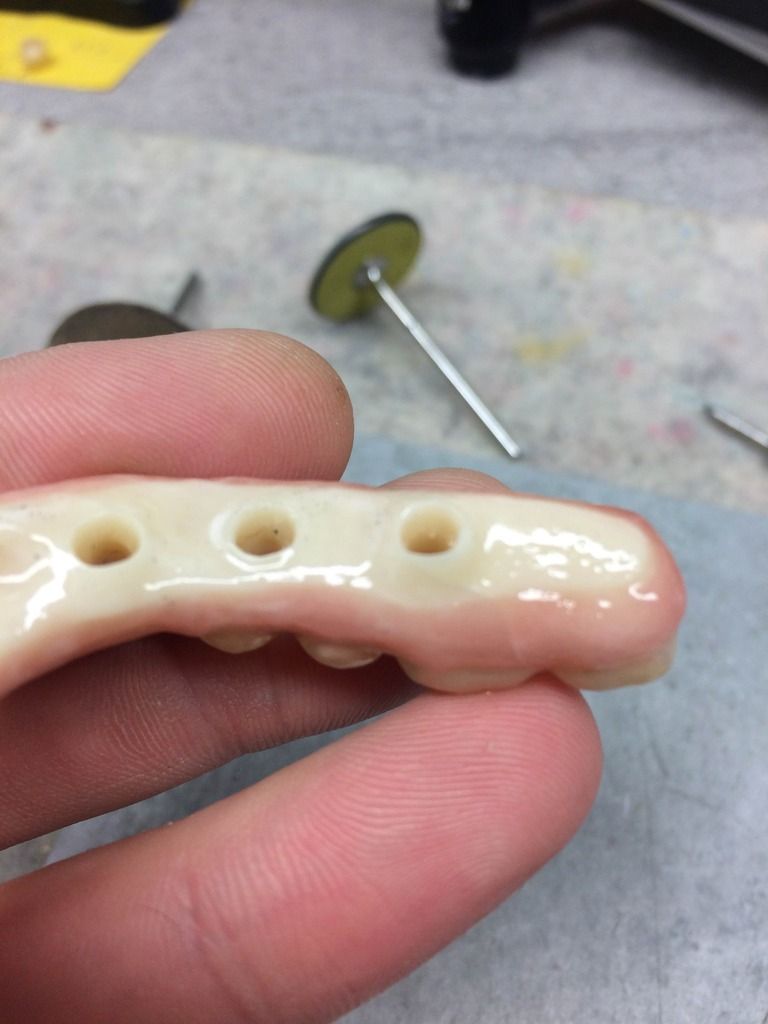Hello
I made a huge full monolith zirkonia case with layered Noritake CZR gingiva only. And after the last glaze it came like this. Furnace is Ivoclar EP3000. I think it was because of a cooling time?What cooling time it should be?

[/URL][/IMG]
[/URL][/IMG]
[/URL][/IMG]
[/URL][/IMG]
[/URL][/IMG]
Hi, here is my answer from your other thread:
Glad to hear it is a little better after calibration. I notice you said a couple things here that intrigue me and give me a couple ideas to try. You mention using CZR porcelain (which tells me you are working on Zirconia). You also mention big cases. With both of these things in mind, here are a few things that consider when programing for these cases.
1. Zirconia is an insulator. What this means is it takes a long time heat-up and a long time to cool-down.
2. Most manufacturer's standard programs are designed for single units or at most a 3 unit bridge. Not for large cases with a lot of mass
So keeping these in mind what I suggest to customers is to drop your heat rate to about 25-30 degrees C. This gives these larger cases a chance to heat evenly and fully. You could also adjust your high temp upwards, but this is less predictable, and can be problematic when working on cases with large and small units together.
I would also recommend setting your Long Term Cooling to about 450C for all your smaller units (4 units or below). If it is larger than 4 units(or has massive pontics),up to a large roundhouse or All-on-4 type restoration, Long Term Cooling should be set to 250C. Setting these temps will keep the oven hood closed until the inside temp hits these marks. I would then allow these units to cool to room temperature, before removing them from the furnace platform. This will help to avoid cracking of the porcelain or Zirconia due to thermal stresses.
As always, anyone is welcome to give me a call at 716-264-2148

, to discuss this or other issues, or just to shoot the breeze!

Let me know if any of this helps, or even makes sense.

 Go back and look at your CAM and look where the bar was placed for the sinter brace. I have seen this come up when its put too near the proximity to the access hole. Also how the sinter brace is sectioned from the pattern can be an issue here as well.
Go back and look at your CAM and look where the bar was placed for the sinter brace. I have seen this come up when its put too near the proximity to the access hole. Also how the sinter brace is sectioned from the pattern can be an issue here as well.
